safety-lane.com 07105
NEWARK
http://bit.ly/1DCt06V
What’s Wrong With My Shoulder?

Your Shoulder
It’s not just a simple joint — it’s a complex structure of muscles and tendons (which hold your muscles to your bones). It lets you scratch your back, drive your car, or get something off a shelf. But all those moving parts mean things can go wrong, which is why so many people have shoulder problems at some point.
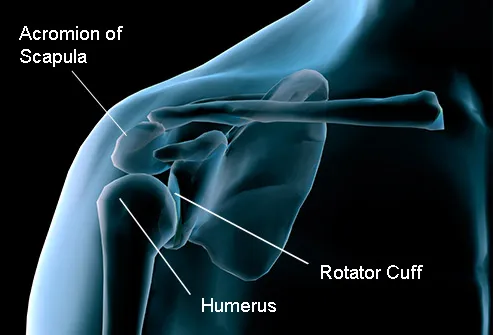
Shoulder Parts
Your shoulder has three bones: the top of your upper arm (the humerus bone) fits into a hole called a socket in your shoulder blade (the scapula bone). A combination of muscles and tendons called the rotator cuff keeps the bone centered in the socket and connects it to your shoulder blade.
Shoulder Problems
If your shoulder hurts and you have trouble breathing or tightness in your chest, call 911 right away — those could be signs of a heart attack. You also should ask someone to drive you to the emergency room if you can’t use your shoulder to move your arm or have sudden swelling or intense pain.
If the pain isn’t that bad but it doesn’t get better or your shoulder is swollen, red, tender, or warm, see your doctor. He’ll ask questions about your symptoms and see how easily you can move your arm around.
Tests
Your doctor may want to get a closer look at the inside of your shoulder. X-rays will show any obvious injuries to the bones, and a CT scan can give a more detailed view. An MRI scan or ultrasound can show if the tissues around your shoulder are damaged.
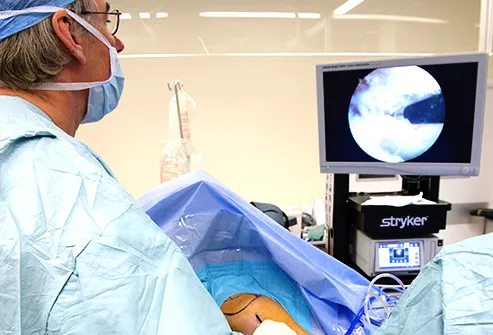
Arthroscopy
If your doctor’s still not sure what’s going on, he may recommend this. He’ll make a small cut in your skin and send a narrow tube with a camera on it into your shoulder. Not only can an arthroscopy help find the problem, but in some cases, special tools can be used to correct it.
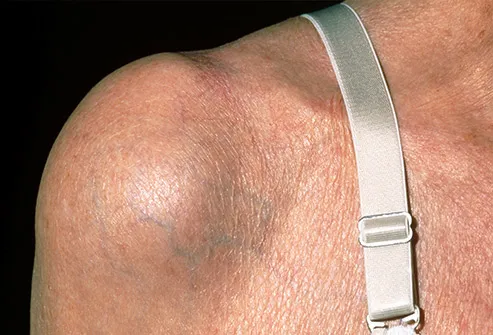
Bursitis
Small fluid-filled sacs called bursas cushion the connections between your bones. If you make the same motion with your shoulder too often — like throwing a baseball or lifting something over your head — these sacs can get inflamed. When you have bursitis, even simple things, like getting dressed or combing your hair, can really hurt.
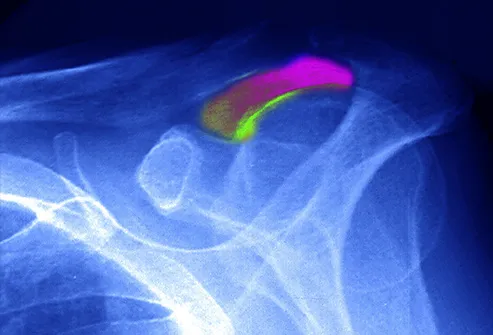
Tendinitis
Like the soles of your favorite shoes, tendons can wear away slowly over time. Conditions that inflame your joints, like arthritis, can cause it, too. In your shoulder, the tendons of your rotator cuff and biceps are most likely to have problems.

Acute Tendinitis
“Overhead” activities like tennis, baseball, and swimming can cause a form of this, especially if you do them too often, in the wrong way, or without enough rest in between. With treatment, this kind is more likely to get better than the “wear and tear” tendinitis that happens over a long period of time.
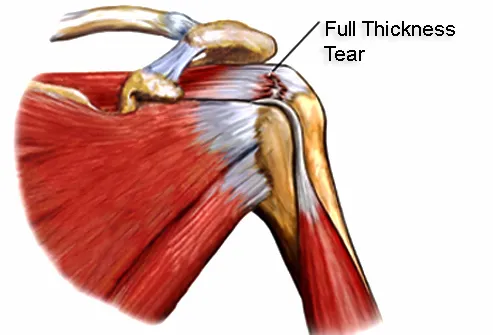
Tendon Tear
It can happen slowly over time or suddenly — after a turn or twist — usually in the tendons of your rotator cuff or biceps. It hurts and keeps you from moving your shoulder easily. If it tears completely, your muscle can pull away from your bone, and it can take a long time to heal. Depending on your age and severity of the injury, your shoulder might improve with time and treatments suggested by your doctor. However, some tendon tears might not improve without surgery.
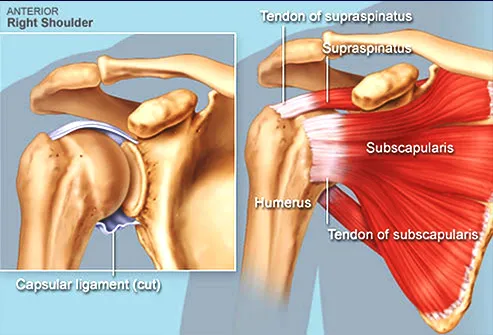
Impingement
Your rotator cuff is sandwiched between two bones: your shoulder blade and your upper arm bone. So when it swells (usually from injury or overuse) and you lift your arm, your acromion, which is part of your shoulder blade. rubs — or “impinges” on — the muscles, tendons, and bursa underneath. This can cause bursitis, tendinitis, and even torn muscles.

Instability
A sudden blow or long-term wear can work the tip of your upper arm bone either partly or all the way out of your shoulder socket. You might know it as a dislocated shoulder. It can tear ligaments, tendons, and muscles, which makes it more likely to happen again. It can cause pain and unsteadiness when you raise your arm, and you may have arthritis there later.
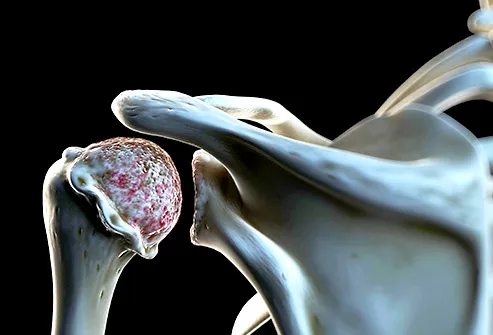
Arthritis
If you have this in your shoulder, it’s usually a type called osteoarthritis. That’s when the cartilage, which covers and protects the ends of your joints, breaks down. Along with causing pain and swelling, it also can make the joint hard to move. It often starts in middle age, is caused by wear and tear, and gets worse over time.
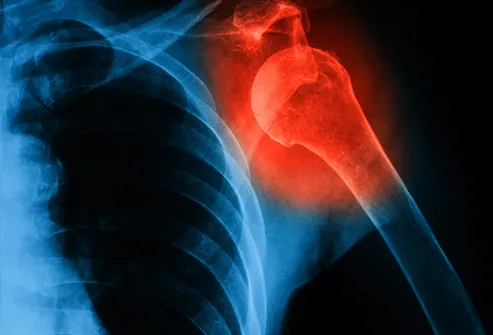
Fracture
You can break or crack your collarbone, upper arm bone, or shoulder blade. This can cause severe pain, swelling, and bruising. Older people often get them from falling. Younger people are more likely to get them playing sports or in car accidents.

Treatment
It’s the same for most shoulder injuries: rest and physical therapy — a combination of massage, strength training, and special exercises that help you rebuild shoulder strength and range of motion. Drugs may help with pain and swelling, and your doctor may give you a shot of medication in your shoulder.
Surgery
You probably won’t need this — rest and physical therapy work most of the time. But certain problems, like a torn rotator cuff, may need surgery. It can range from simple arthroscopy to take out scar tissue to major open surgery to rebuild your shoulder.
Treatment for Less Common Problems
These include infections, tumors, and nerve problems. Your doctor can treat a bacterial infection — caused by an illness or an infected wound — with antibiotics. Tumors may need to be removed with surgery. Nerve problems may be caused by a simple pinched nerve or diseases that affect your brain cells and nerve cells likes Parkinson’s disease. In those cases, you’ll probably need to see a specialist to treat the underlying issue.
via Blogger http://bit.ly/2TUfJo4

Recent Comments